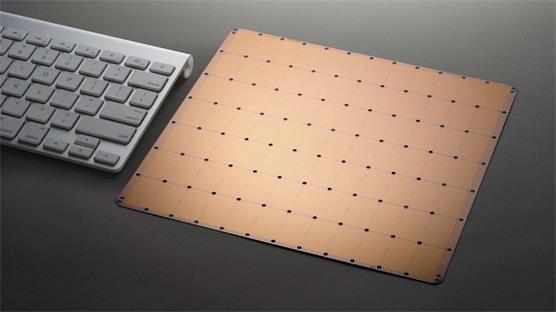Technology industry dynamics: New trends in Semiconductor, Automotive and AI fields
Recently, the global technology industry has witnessed a series of significant changes. From mergers and technological breakthroughs in the semiconductor sector, to tariff challenges faced by the automotive industry, and the deep integration of AI in cloud computing, these events not only reflect the current trends in the technology industry but will also have a far-reaching impact on the future industrial landscape.
I. Infineon Acquires Marvell's Automotive Ethernet Business
German chip giant Infineon has recently reached a significant deal with Marvell to acquire the latter's automotive Ethernet technology business for $2.5 billion (equivalent to approximately 18.22 billion yuan). The transaction is expected to be completed in 2025, pending regulatory approval.
For Marvell, the sale is part of its strategic transformation. The company is shifting towards becoming a provider of data center infrastructure solutions, with the data center end market contributing 75% of its total revenue in the fourth quarter of the 2025 fiscal year. By divesting its automotive Ethernet business, Marvell will free up around $2.5 billion in cash flow, allowing it to further strengthen its investment in areas such as server chips and AI accelerators.
Infineon, on the other hand, aims to enhance its automotive chip technology portfolio and solidify its leading position in the automotive MCU field through this acquisition. Infineon's CEO, Jochen Hanebeck, stated that the acquisition holds great strategic significance for Infineon, supporting the company's future profit growth strategy, including new opportunities in the field of physical AI, such as humanoid robots.
This deal reflects two major trends in the semiconductor industry: on one hand, companies are rapidly acquiring key technologies through strategic mergers and acquisitions; on the other hand, automotive electronics is becoming a new battleground for semiconductor giants. As the level of intelligence and connectivity in vehicles continues to rise, the demand for related chips will keep growing.
II. SK Hynix Achieves 80% Yield Rate for 1c nm DRAM
 According to South Korean media reports, SK Hynix's 1c nm (sixth-generation 10-nanometer class) DRAM memory process has recently achieved a yield rate of 80%, a significant improvement from the 60% yield rate in the second half of last year. In the semiconductor manufacturing field, DRAM memory processes typically enter mass production when the yield rate reaches 80% to 90%. This means that SK Hynix's 1c nm process is nearing the level required for large-scale production. However, it will still take more time for SK Hynix's sixth-generation 10-nanometer process to be applied in the high-demand HBM field, and the HBM4 memory to be mass-produced this year will still use the more mature 1b nm DRAM.
According to South Korean media reports, SK Hynix's 1c nm (sixth-generation 10-nanometer class) DRAM memory process has recently achieved a yield rate of 80%, a significant improvement from the 60% yield rate in the second half of last year. In the semiconductor manufacturing field, DRAM memory processes typically enter mass production when the yield rate reaches 80% to 90%. This means that SK Hynix's 1c nm process is nearing the level required for large-scale production. However, it will still take more time for SK Hynix's sixth-generation 10-nanometer process to be applied in the high-demand HBM field, and the HBM4 memory to be mass-produced this year will still use the more mature 1b nm DRAM.
The technological progress of SK Hynix's 1c nm DRAM memory process is of great significance to the global memory market. As applications such as AI and big data continue to demand higher memory performance, more advanced DRAM technology will become a key factor in industry competition. SK Hynix's technological breakthrough will enhance its competitiveness in the global memory market, especially in the high-end DRAM sector.
III. Horiba Acquires Korean Chip Equipment Maker EtaMax
Japanese measuring instrument manufacturer Horiba has announced the acquisition of all shares of Korean chip equipment manufacturer EtaMax. Although the specific transaction amount has not been disclosed, it is estimated to be around 3 billion yen (about 1.5 billion yuan). Founded in 2008, EtaMax has 40 employees and an annual sales volume of about 1 billion yen. The company's systems can help chip manufacturers detect scratches and other defects on wafers using photoluminescence, and it is particularly strong in providing inspection equipment for power semiconductors using next-generation gallium nitride (GaN) as a substrate.
Through this acquisition, Horiba plans to combine the strengths of both companies to expand in the semiconductor field and develop new products to expand its wafer analyzer product line. Horiba's goal is to achieve sales of 235 billion yen in the semiconductor and advanced materials fields by 2028, an increase of 60% from the current level.
IV. Amazon Web Services Launches Amazon Q Developer in OpenSearch
Amazon Web Services (AWS) has recently announced that its AI assistant, Amazon Q Developer, now supports Amazon OpenSearch Service. This new feature leverages AI capabilities to help users more efficiently analyze and visualize operations data.
The product addresses three major pain points: 1) reducing the learning curve for query languages, visualization tools, and alert functions; 2) enhancing existing dashboards and visualization capabilities through natural language processing and pattern detection; 3) quickly creating additional visualization charts after an incident to strengthen monitoring capabilities.
This innovation will significantly improve operational efficiency, accelerate incident resolution, and optimize the utilization of engineering resources. It represents an important trend in the cloud computing field: AI technology is deeply integrating into infrastructure services, enabling enterprise teams to focus more on innovation rather than troubleshooting.
V. Audi Halts Vehicle Deliveries to U.S. Due to Tariffs
 The 25% auto tariff policy implemented by the Trump administration in the United States on April 2 poses a significant challenge to export-dependent brands like Audi. As a subsidiary of the Volkswagen Group, Audi has no production base in the United States, making it particularly vulnerable to the new tariff policy. Audi has decided to halt the delivery of vehicles arriving at U.S. ports after April 2. These vehicles will be temporarily detained and not distributed to dealers.
The 25% auto tariff policy implemented by the Trump administration in the United States on April 2 poses a significant challenge to export-dependent brands like Audi. As a subsidiary of the Volkswagen Group, Audi has no production base in the United States, making it particularly vulnerable to the new tariff policy. Audi has decided to halt the delivery of vehicles arriving at U.S. ports after April 2. These vehicles will be temporarily detained and not distributed to dealers.
Audi has stated that there are currently over 37,000 vehicles in the U.S. inventory that are not affected by the new tariff, which can meet the market demand for about two months. As a subsidiary of the Volkswagen Group, Audi is especially reliant on imports, and the new tariff policy has a significant impact on its U.S. operations.
This incident highlights the trade policy risks faced by the global automotive industry. Tariff barriers not only affect the market strategies of specific brands but may also alter the global automotive industry layout. In the long run, this could prompt more automakers to consider establishing local production bases to mitigate the risks associated with trade policy changes.
Conclusion
From strategic mergers and technological breakthroughs in the semiconductor industry, to the automotive industry's response to trade policy challenges, and the deep integration of AI in cloud computing, these events collectively paint a picture of the rapid evolution of the global technology industry. Companies are acquiring key technologies through mergers, breaking through technological barriers through innovation, and adjusting strategies to cope with policy changes. These strategies will determine the future direction of the industrial landscape. As technological convergence accelerates and global competition intensifies, the dynamics of the technology industry are worth continuous attention.
Conevo Semiconductor modules
At Conevo Electronics, we provide reliable and high-quality integrated circuit / IC solutions to clients worldwide. Our website helps customers quickly obtain essential IC components and materials for their electronic projects. Below are some of the latest popular IC models.
● The OP4177ARUZ is a low-input bias current quad operational amplifier from Analog Devices Inc., featuring a maximum offset voltage of 60 μV and an offset voltage drift of 0.7 μV/°C. It offers low input bias current (2 nA max), low noise (8 nV/√Hz typical), and operates over a wide voltage range from ±2.5 V to ±15 V.
● The LM358DR is a dual operational amplifier designed for general-purpose applications. It features low power consumption and a wide operating voltage range from ±1.5V to ±16V (dual supply) or 3V to 32V (single supply). The LM358DR offers rail-to-rail operation, low input offset voltage (typically 3mV), and a unity-gain bandwidth of around 1.2MHz.
● The ADF4355BCPZ from Analog Devices is a wideband fractional-N phase-locked loop (PLL) frequency synthesizer with an ultra-low-noise integrated voltage-controlled oscillator (VCO). It supports RF output frequencies ranging from 54 MHz to 6800 MHz, making it ideal for high-frequency applications like wireless infrastructure, radar systems, and test equipment.
Website: www.conevoelec.com
Email: info@conevoelec.com








